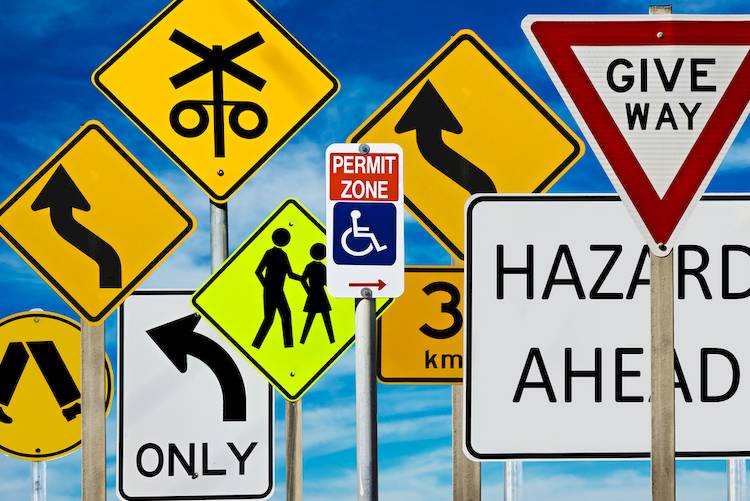

If you have a valid driver’s license chances are, you’re very familiar with the traffic laws in your home state as well as those that remain the same from one location to the next. While there are many road rules based on common sense, there are some that differ from state to state. If you are planning on visiting or living in New Hampshire, you will need to be aware of the road rules for drivers listed below that may be different from those that you are used to following.
Licenses and permits
Those who move to New Hampshire are required to update their licenses to one from the state within 60 days of establishing residency. Any vehicles must also be registered in New Hampshire within 60 days of becoming a resident.
Youth Operator Licenses are for those who are between the ages of 16 and 20. These licenses are restricted and do not allow driving between 1 AM and 4 AM. For the first 6 months, drivers are not permitted to have more than 1 passenger who is under 25 that is not a member of the family unless a licensed driver age 25 or older is in the vehicle.
New Hampshire allows those who are 15 years and 6 months to drive prior to having a license if they carry proof of age and a parent, guardian or licensed driver over age 25 is in the front seat.
Required equipments
All vehicles must have a working defroster that blows heated air onto the windshield.
Rearview mirrors are required and can’t be broken, cracked or obstructed.
All vehicles must have working windshield wipers that are in good condition.
License plate lights are required on all vehicles.
A working muffler system that has no leaks or holes and does not allow excessive noise is required.
All vehicles are required to have working speedometers.
Seat belts and child restraints
Anyone riding in a vehicle who is less than 18 years old is required to wear a seat belt.
Children under 6 and less than 55 inches tall must be in an approved child safety seat that is appropriate for their size and positioned correctly based on manufacturer specifications.
Drivers are responsible for ensuring that all children are restrained properly.
Right of way
When approaching an intersection, drivers must yield the right of way to any vehicle or pedestrian already in the intersection.
Pedestrians in intersections and crosswalks always have the right of way.
Drivers must always yield the right of way to vehicles that are a part of a funeral procession.
Drivers must yield right of way any time not doing so could cause an accident.
General rules
Inspections - All vehicles must be inspected once each year. These inspections occur during the birth month of the vehicle’s owner. Vehicles must be inspected at an Official Inspection Station.
Motorcycles - All riders and passengers who are less than 18 years of age are required to wear helmets when riding a motorcycle.
Right turn on red - It is legal to make a right turn on red if there are no signs prohibiting it and after yielding to other drivers and passengers. However, it is illegal to do so unless a ‘DON’T WALK’ signal is on and not flashing.
Dogs - Dogs are permitted in the bed of pickup trucks. However, they must be secured to protect against the animal jumping, falling or being thrown from the vehicle.
Turn signals - Drivers are required to use turn signals 100 feet prior to a turn on city streets and 500 feet prior to the turn when on the highway.
Slowing down - Drivers are required to tap the brakes three or four times to illuminate the brake light when slowing down in a location others might not expect. This includes when turning off a highway, into a driveway, to park and when there are obstructions in the road that drivers behind your vehicle may not be able to see.
School zones - The speed limit in school zones is 10 mph less than the posted speed limit. This is in effect 45 minutes before the school opens and 45 minutes after the school closes.
Slow drivers - It is illegal for a driver to operate a vehicle at speeds that are slow enough to alter the normal flow of traffic. If vehicles are piling up behind a slow driver, he or she is required to pull off the road so other drivers can pass. During ideal weather conditions, the minimum speed on interstates is 45 mph.
The above rules of the road for New Hampshire drivers may be different from those in your own state. Following them in addition to those that are always the same no matter where you drive will make sure you are legal and safe on the roads. If you have questions, please reference the State of New Hampshire Driver’s Manual.



